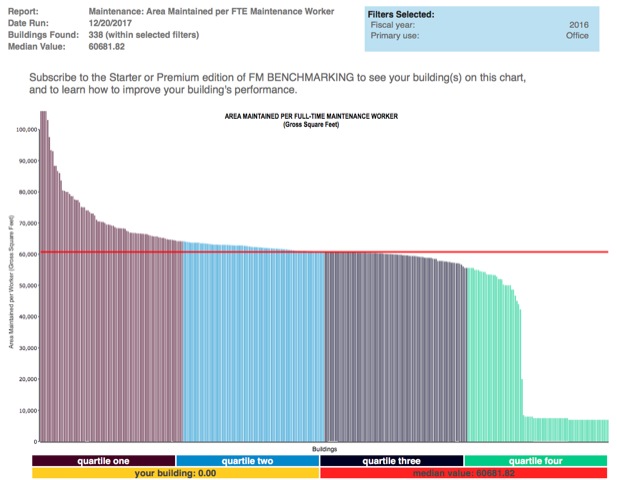December 2017 – Service providers and outsourcers can use maintenance benchmarks to develop staffing projections for:
- New clients when bidding on new projects.
- Justification of existing staffing levels.
- Showing the need for additional staff.
- Avoiding the need to re-bid work and extend the contract period.
Most of the costs for providing maintenance services are labor costs. There are many industry “rules of thumb” for the ratio between labor costs and materials but for most service providers the cost of labor is around 80% and the cost of materials is around 20%. To provide great service you need to manage the materials component of the contract effectively but the real impact is in the staffing. Here is how benchmarking can help.
All good, high quality benchmarking services should provide a module to benchmark staffing levels at a high level. At a minimum, you should be able to benchmark total craft (trade) staffing levels, but not usually by craft. If you try to get more granular you quickly learn that most organizations cannot readily report their staffing by specific trades, e.g. area maintained per electrician. That is because many service providers have multi-skilled crafts that can perform electrical, HVAC, plumbing, carpentry, painting, etc.
For example, if you have 8 multi-skilled crafts on a site, how does one report the number of electricians HVAC techs, plumbers, etc.? You could look at work order codes but in a multi-skilled environment, the same skilled worker that installed an electrical outlet, also painted the area around the outlet and moved the furniture to get to it. So is the worker coded as an electrician? A painter? A mover?
So, let’s learn what we can from benchmarking at a high level and see the benefits.
First, focus on what is most important! Maintenance labor represents about 80% of the costs, so benchmark the total staffing profile. Good benchmarking comparisons need to be made with a relevant peer group. For a quick analysis, we are using FM BENCHMARKING’s Query Edition to create a chart showing the area maintained per worker of a good peer group. Figure 1 is a chart showing area maintained per worker for office facilities.

Figure 1 – GSF (000) maintained per worker
Filters: Type of facility (Office)
Provided courtesy of FM BENCHMARKING (Query Edition)
This allows you to see at a glance how well your facilities are staffed compared to other office buildings. There are 338 buildings in this peer group with a median staffing level of 60,682 gross square feet maintained per worker and a first quartile performance of 64,150 gross square feet maintained per worker. By looking at, and comparing similar types of facilities, you will be able to make intelligent “data driven” decisions.
The usual “next step” is to total the gross square feet and staffing level at your facility and divide them to determine the gross square feet maintained per worker at your facility. Let’s assume the size of your facility is 450,000 GSF and the staffing level is 10 workers. This produces a staffing metric of 45,000 GSF maintained per worker which would be in the fourth quartile. This is an opportunity for the service provider to look carefully at the staffing levels and possibly reallocate some resources.